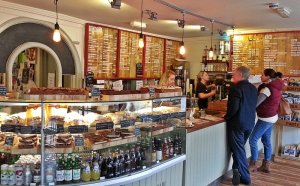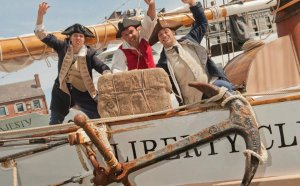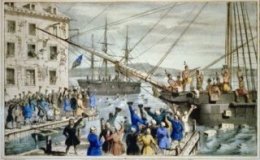
Samuel Adams Boston Tea Party
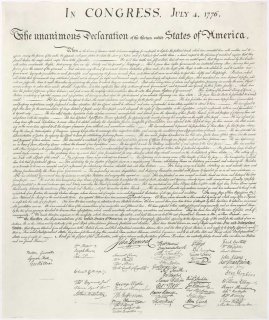 Samuel Adams Signature on the Declaration of Independence, 1776. New York Public Library.
Samuel Adams Signature on the Declaration of Independence, 1776. New York Public Library.
Samuel Adams was one of Boston’s most prominent revolutionary leaders. He was known for his ability to harness popular resentment against Parliament’s authority to tax the colonies in a productive manner. His role in the origins of the American War of Independence cannot be understated. His unique perspective and his ability to galvanize popular support were pivotal in the success of the Boston Tea Party.
Considered the leader of the protest movement against Parliament’s authority in Massachusetts, Samuel Adams was instrumental in convincing people to join the Sons of Liberty. As a British citizen, he often referenced the Magna Carta of 1215 which effectively ended arbitrary taxation of barons in England. In the eighteenth century, Boston’s struggle against Parliament’s Acts of taxation seemed all too familiar.
Early Life
Born on September 16, 1722, Samuel Adams was born to a family which was well versed in political protest. His father, Deacon Adams, was a brewer, and owned a brewery in Boston. During the 1730’s, Boston experienced a severe economic recession due to a lack of currency, or paper money, in circulation. As a result, in 1739 Deacon Adams helped found the Land Bank which offered paper money to borrowers who mortgaged their property. This Land Bank currency was very popular, especially with poor farmers. It allowed them the power to purchase goods from Boston merchants who were in desperate need of customers. The Land Bank seemed to solve all problems; it gave farmers more purchasing power, and allowed Boston merchants to sell more goods.
Patrick Henry, John Hancock, Geo. Washington, Sam Adams, Jas. Madison, Tho. Jefferson [and] Ben Franklin. New York Public Library.
![Photo of Patrick Henry, John Hancock, Geo. Washington, Sam Adams, Jas. Madison, Tho. Jefferson [and] Ben Franklin](/img/photo_of_patrick_henry_john_hancock.jpg) Distrust of the British Government Grows
Distrust of the British Government Grows
Everyone did not fully support this new form of currency. The opposition was led by the Court Party, or aristocratic loyalists who sat primarily on the Governor’s Council. In 1741, the members of the Court Party used their status to pressure Parliament to outlaw the Land Bank, and the currency it produced. Those that had manufactured the currency, such as Deacon Adams, were now responsible for all of the paper money that was now circulating throughout Massachusetts Bay Colony. All of the farmers that borrowed the currency were now owed silver and gold, and this would come out of the pocket of Deacon Adams. This sent his family spiraling into bankruptcy, and even after Deacon Adams passed away, Samuel Adams would have to defend his estate from the members of the Court Party who wished to seize his land as payment for the debts Deacon Adams owed the government.
This debacle surrounding the land bank left a strong impression on Samuel Adams. This left him with a strong distrust of government. He viewed this decision by Parliament as an exercise of arbitrary power. Naturally he gravitated toward the Popular Party, which was led by James Otis Jr., a fiery orator who had personal grievances against many of the members of the aristocratic Court Party. Otis guided Adams in his young political career, and helped him develop the rhetoric, and methods of political resistance, which would be influential in the rise of the Sons of Liberty. By 1765, Samuel Adams was ready to take the lead.
The Loyal Nine
In 1765, the first direct tax was imposed on the colonies by way of the Stamp Act. Samuel Adams saw this as yet another example of arbitrary authority exercised by the British Parliament. The colonies had not been consulted on issues of taxation, and moreover, they had no representatives in Parliament to defend them. Samuel Adams and the Loyal Nine led the resistance through popular protests which culminated in the Stamp Act Riots of August 1765. These riots resonated with Parliament, but they continued to pass Acts of taxation without consulting the colonies.
British Regulars Land at Long Wharf
In 1767, the Townshend Acts were passed which taxed items such as lead, glass, paint, and tea. In response to the Townshend Acts, in February of 1768, Samuel Adams drafted the Massachusetts Circular Letter which advocated for a return to “salutary neglect” which had been enjoyed by the colonies prior to the revoking of the Massachusetts Charter in 1688. The Stamp Act Riots and the Massachusetts Circular Letter left a strong impression on Parliament, and after the riots that ensued as a result of the Liberty Affair in 1768, they were now convinced that soldiers had to be sent to Boston. On October 1, 1768, nearly two thousand British regulars landed at Long Wharf, paraded around town, and finally camped out on Boston Common.
Samuel Adams & the Sons of Liberty
Samuel Adams was agitated by the presence of regular soldiers in the town. He and the leading Sons of Liberty publicized accounts of the soldiers’ brutality toward the citizenry of Boston. On February 22, 1770 a dispute over non-importation boiled over into a riot. Ebenezer Richardson, a customs informer was under attack. He fired a warning shot into the crowd that had gathered outside of his home, and accidentally killed a young boy by the name of Christopher Sneider. Only a few weeks later, on March 5, 1770, a couple of brawls between rope makers on Gray’s ropewalk and a soldier looking for work, and a scuffle between an officer and a whig-maker’s apprentice, resulted in the Boston Massacre. In the years that followed, Adams did everything he could to keep the memory of the five Bostonians who were slain on King Street, and of the young boy, Christopher Sneider alive. He led an elaborate funeral procession to memorialize Sneider and the victims of the Boston Massacre. The memorials orchestrated by Samuel Adams, Dr. Joseph Warren, and Paul Revere reminded Bostonians of the unbridled authority which Parliament had exercised in the colonies. But more importantly, it kept the protest movement active at a time when Boston citizens were losing interest.
RELATED VIDEO
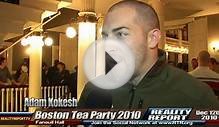
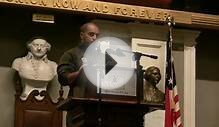

Share this Post
Related posts
Boston Tea Party Locations
How did the Sons of Liberty disguise themselves at the Boston Tea Party? American Indians. In an effort to hide their true…
Read MoreBoston Tea Party reenactment
December 16th Anniversary Celebration! Friends! Brethren! Countrymen! Join us each and every year on December 16 to celebrate…
Read More
